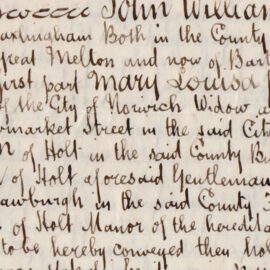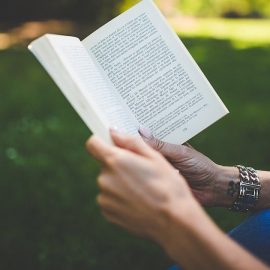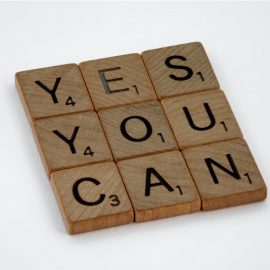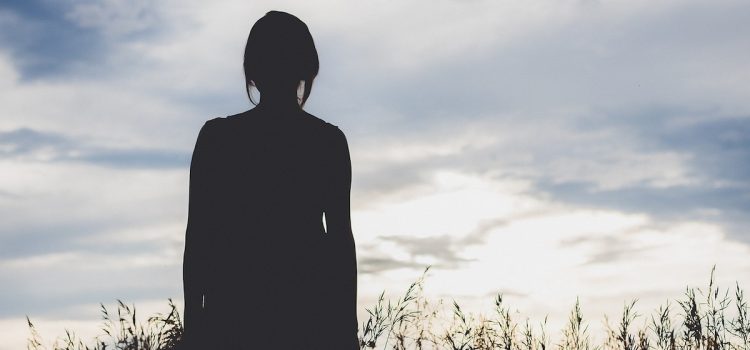
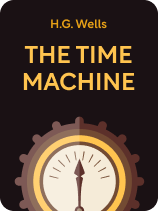
This article is an excerpt from the Shortform book guide to "The Time Machine" by H.G. Wells. Shortform has the world's best summaries and analyses of books you should be reading.
Like this article? Sign up for a free trial here.
Why does Weena become attached to the Time Traveller? What does she represent in the story?
The Time Machine is a story about a scientist who travels into the distant future. He finds that humanity has evolved into two separate species—the childlike Eloi and the bestial Morlocks. One of the Eloi latches on to him and leaves a lasting impression.
Read more to learn about Weena, The Time Machine’s promise of hope for the future.
The Time Machine: Weena
In H.G. Wells’s The Time Machine, Weena is an intriguing character. Let’s look at how she fits into the story. Near the beginning of the tale, a Time Traveller goes as far into the future as he dares and lands in the year A.D. 802701. He lands in a garden, near a statue of a sphinx on a bronze pedestal. He soon meets a group of people called the Eloi, who appear to be distant descendants of humans.
One of the Eloi—a female named Weena—falls into a river. None of her companions try to help, so the Time Traveller jumps in to save her. Afterward, Weena becomes attached to him and follows him for the rest of his time in A.D. 802701.
On his fourth day in the future, the Time Traveller takes shelter in one of the many ruins. Inside it, he encounters a strange, pale, ape-like creature, larger than an Eloi though still smaller than a human. The creature immediately runs away from him. He tries to follow, but it climbs down a well and disappears.
Thinking about everything he has seen since arriving in A.D. 802701, the Time Traveller concludes that humans have evolved into two species: the surface-dwelling Eloi and this subterranean race, whom he learns are called Morlocks.
After the first encounter, the Morlocks pursue the Time Traveller and Weena. While the Morlocks don’t attack until the Time Traveller enters their territory, they keep chasing him and trying to kill him long after he leaves it. The Morlocks take the time machine and hide it.
The Time Traveller continues to explore and finds several useful items. In a library filled with decayed books, he finds a box of matches and a jar of camphor (a chemical compound that burns quickly and brightly).
At this point the Time Traveller decides to go back to the garden, hoping that he can get his machine back. However, the Morlocks pursue him and Weena, eventually surrounding them and trapping them in the woods. The Time Traveller builds a fire to keep the Morlocks away, and he and Weena fall asleep.
The Morlocks attack during the night despite the fire. The Time Traveller kills several of them, and the rest run away. He then realizes that the fire he started has spread to the surrounding trees and Weena has disappeared, so he runs alone out of the woods to safety.
Once the sun rises the Time Traveller searches for Weena again. However, he still can’t find her, and he concludes that she must have died in the fire.
Returning to the Present
The Time Traveller lands his machine on the same date he’d started from. He hears the sounds of the dinner party happening just outside his laboratory, so he greets his guests, cleans himself up, and joins them.
The Time Traveller tells the dinner guests about his journey through time and adds that he doesn’t expect them to believe him. So, as evidence of his travels, he places two strange white flowers—a gift from Weena—on the table. He also points out that the time machine is stained with dirt and grass, which would be impossible had it never left his laboratory.
The story ends with the narrator explaining that three years have passed since that day. The Time Traveller never returned, and the narrator now thinks that he never will. He wonders whether the Time Traveller is still wandering through time or if he died during his travels.
(Shortform note: The 1960 movie adaptation of The Time Machine has a more conclusive and happier ending—the Time Traveller returns to the future to keep searching for Weena and to help the Eloi start a new culture for themselves.)
Furthermore, the narrator is still deeply upset by what he’d heard about the end of humanity and, later, the end of the world. His only comfort is the two flowers from Weena, which he kept for himself after the Time Traveller left on his second journey. To the narrator, the flowers symbolize the fact that people will always have the capacity for love and gratitude, even after they’ve lost everything else that makes them human.

———End of Preview———
Like what you just read? Read the rest of the world's best book summary and analysis of H.G. Wells's "The Time Machine" at Shortform.
Here's what you'll find in our full The Time Machine summary:
- An overview and analysis of H.G. Wells's 1895 science fiction novel
- A look at the science behind the story—what's real and what's fiction
- The literary techniques and symbolism Wells used to craft the story


